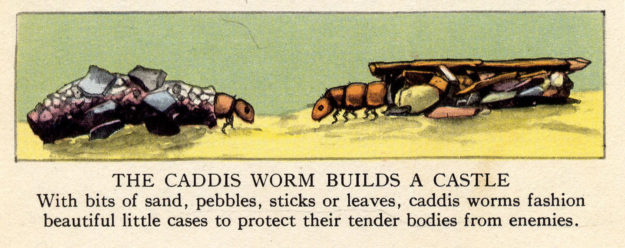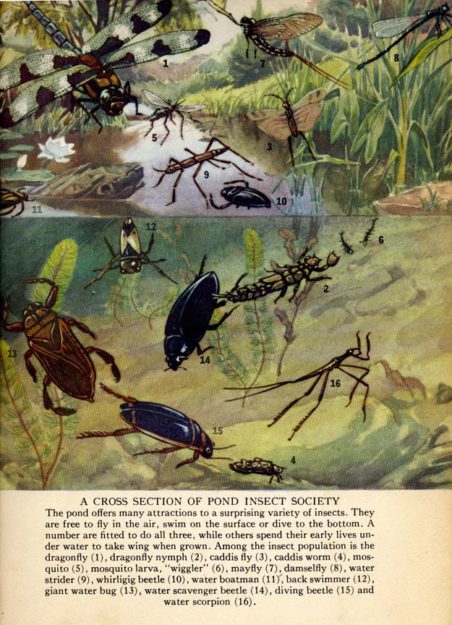Chester Henry Lawrence & Esther Bjoland, The pond world. Adventures in seeing. Garden, New York, City Publishing, 1940, pp. 44-46.
Shuffling along the bottom of the pond was another little youngster we scooped up in our net. This was the larva of the caddis fly, a little worm-like creature enclosed in a tube, with only his head and shoulders sticking out. The caddis worm has chosen a most clever method of protection. Well aware of the dangers that surround him, he has learned to carry his castle with him and is always on a sharp lookout for any creatures with designs on his life. At the first sign of danger, in pops his head and he is safe from harm.

Doc Seemore told us a great deal about caddis worms. Each follows his own ideas in the matter of materials or the style of shelter. Some wear leave, bound round and round like a frilly skirt, while others prefer a long straight coat made of little pieces of rush, twigs or grass, carefully woven together with silken threads. These the caddis worm spins from his mouth, in much the same manner as the Caterpillar does in spinning.

Bob and I found some caddis worms that made little cases of sand, shell, seeds and pebbles, all neatly bound together. And there were others who likes careless dressmakers, seemed to have thrown their clothes together. But whatever the costume, i twas always linde with a finely woven silken tibe, or undergarment, as a protection to the tender body Inside. Littles hooks on the tail held the case in place. Whenever a garment was outgrown, Doc said, the caddis worm addes a new fril, or row of materials, unless a new dress was desired.